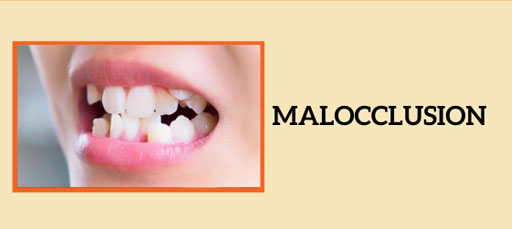
Malocclusion – Symptoms, Causes, Treatment
Misalignment of the teeth, commonly known as Malocclusion, affects millions of people worldwide. This dental condition can lead to various issues, from aesthetic concerns to more severe dental problems. Understanding its symptoms, causes, and available treatments is crucial for maintaining oral health and overall well-being.
Symptoms of Malocclusion:
- Misaligned Teeth: The most apparent sign is visibly crooked, crowded, or protruding teeth.
- Difficulty Chewing or Biting: Malocclusion can make it challenging to chew food properly, leading to jaw discomfort.
- Speech Problems: Certain misalignments can cause speech impediments or difficulties pronouncing words.
- Mouth Breathing: In some cases, malocclusion contributes to habitual mouth breathing.
- Facial Pain: Jaw pain, headaches, or discomfort in the facial muscles can occur due to misaligned teeth.
Causes of Malocclusion:
- Genetics: Hereditary factors often play a significant role in the development of malocclusion.
- Childhood Habits: Thumb sucking, prolonged use of pacifiers, or tongue thrusting can affect tooth positioning.
- Injury: Trauma to the face or mouth can lead to misalignment of the teeth or jaw.
- Poor Dental Care: Improper dental care, such as not wearing retainers post-braces, can contribute to misalignment.
- Tumors or Cysts: In rare cases, tumors or cysts in the jaw can cause misalignment.
Treatment Options for Malocclusion:
- Orthodontic Treatment: Braces or clear aligners like Invisalign can gradually move teeth into proper alignment.
- Retainers: After orthodontic treatment, retainers are essential to maintain the corrected position of the teeth.
- Tooth Removal: In cases of severe overcrowding, extraction of one or more teeth might be necessary.
- Surgery: Severe cases of malocclusion, particularly when the jaw is misaligned, may require surgical intervention.
- Dental Bonding or Reshaping: Minor misalignments or cosmetic concerns can be addressed through dental bonding or reshaping.
Preventive Measures:
- Early Dental Visits: Regular visits to the dentist from an early age can help detect and address malocclusion promptly.
- Orthodontic Evaluation: Children should have an orthodontic evaluation by age 7 to identify potential issues early.
- Healthy Habits: Encouraging children to avoid thumb sucking or prolonged pacifier use can prevent malocclusion.
- Proper Dental Care: Good oral hygiene practices and following orthodontic recommendations can minimize risks.
Conclusion:
Malocclusion is a common dental condition with various causes and symptoms. Timely detection and appropriate treatment can not only improve dental aesthetics but also prevent potential oral health complications. Consulting a qualified orthodontist is essential to determine the most suitable treatment plan based on individual needs.
Remember, maintaining good oral hygiene and seeking professional guidance are key steps towards preventing and addressing malocclusion for a healthy, confident smile.
Leave a Reply
Leave a Reply
Explore More Similar Posts
Explore More Blogs


Leave a Reply